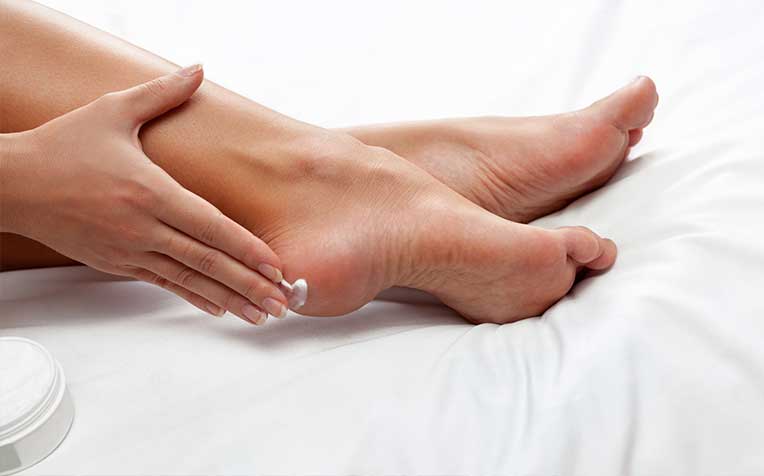
Check your feet daily for any injuries.
How diabetes can affect your feet
Diabetic foot complications develop due to multiple problems:
Increased risk of infection due to high blood glucose levels
Increased risk of dry and thickened skin
Reduced or absent pain and touch sensation due to nerve disease
Reduced blood flow to limbs due to narrowing of blood vessels
What to do to lower your risk of diabetic foot complications
Keep your sugars and blood pressure on target.
Check your feet daily for any cut, sores, blisters, thickened skin or ingrowing toenails on your feet. If found, keep it clean and seek early medical attention.
Get your feet checked at least annually to identify any reduced sensation or reduced blood flow.
Always use footwear to avoid injury within the house, and when you are outside. Wear socks and covered shoes at all times if possible.
Dry your feet after a shower and apply a moisturiser. Do not apply moisturiser between your toes.
Do not soak your feet in hot water and put your feet away from heaters.
Trim your toenails straight across, avoid cutting down the sides.
Avoid peeling/cutting the skin on your feet and avoid using corn plasters for corns or hard skin. Use a foot file gently or see a podiatrist instead.
How to choose good footwear to prevent injury?
It is important to recognise the role of shoes in the prevention and formation of diabetic foot wounds. Poor-fitting or unsuitable footwear may result in the development of blisters or wounds. A good pair of shoes should have the following features:
There should be one thumb's width from your longest toe to the front of the shoe.
The width should fit the widest part of your foot to prevent rubbing against the shoes.
Shoes should be deep enough to accommodate any foot deformities.
The front of the shoes should be flexible to assist you with your walking.
The middle of the shoe should be rigid enough to give you maximum support in your arches.
There should be a firm heel counter for increased support.
Shoes should have laces or velcros to prevent excessive movement of the feet within the shoes. It is preferable that you choose a covered pair of shoes as this will provide better protection for your feet.
Regular assessment of the diabetic foot may reduce risks of ulceration, infection and amputation.

Look for shoes with either shoe laces or velcro fasteners. Do not look for slip-on shoes.
When should I see my healthcare provider about foot problems?
During your daily foot checks, please seek immediate medical attention if you notice any of the following:
Any cut, blister, or bruise on your foot which does not start to heal in a few days.
Any redness, swelling, warmth, pain from your foot – these are signs of possible infection.
Callus with dried blood inside, which is often a first sign of a wound developing under the callus.
Any part of your foot that becomes black and smelly – these are signs that you may have gangrene.
Ask your healthcare provider to refer you to a podiatrist, if needed.
Ref: O17


















 Get it on Google Play
Get it on Google Play